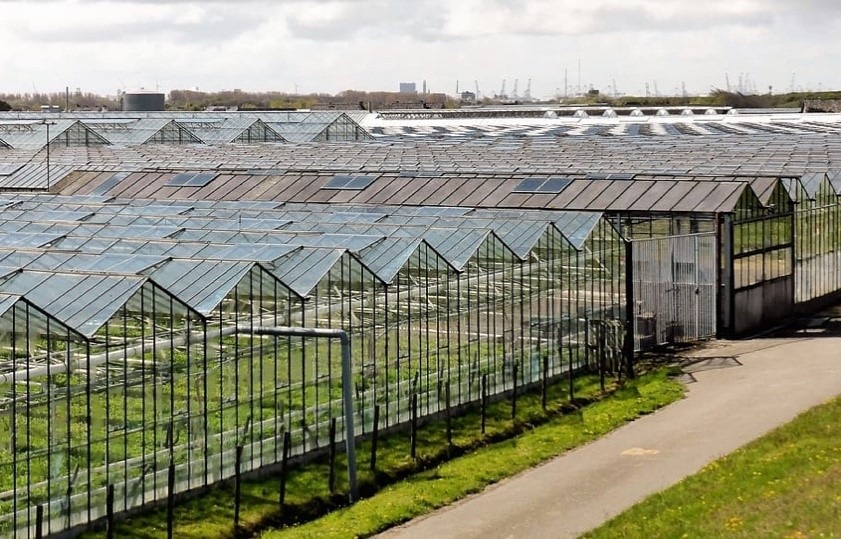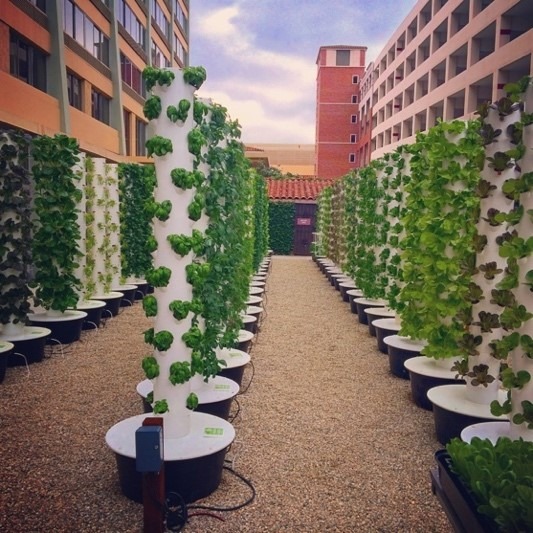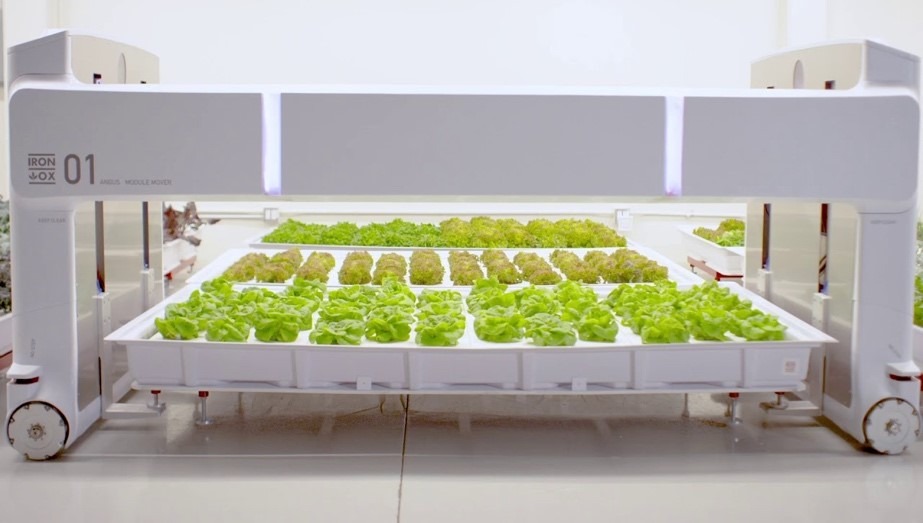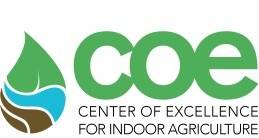Introduction
Indoor farming is a rapidly growing industry, and it makes sense that California is fully embracing it. Plenty Inc. and Iron Ox are indicative of companies that have utilized California’s access to resources and technology to set themselves up for future success. This post will go into depth about these and other indoor farms that are helping to revolutionize California’s food production system.
What is Indoor Farming?
Indoor farming represents the cultivation of crops in a controlled environment thus allowing for year-round growing. This approach to growing food includes a range of methods such as greenhouse production, hydroponics, aeroponics, plant factories, and vertical farming.
Many new technologies and methods are used to fine-tune nutrient delivery, water use, climate conditions, and artificial lighting to create optimal growing conditions using fewer resources. These innovative designs and technologies help make indoor farming methods more sustainable and allow for the production of fresh vegetables and greens anywhere throughout the year (Stein 2021).

Benefits of Indoor Farming
The benefits of indoor farming are numerous. Some argue that on a macro scale indoor farming addresses many of the concerns regarding traditional food production methods such as the over-use of pesticides, the consumption of freshwater, soil erosion, and nutrient loading. Furthermore, some argue that it offers a new way to feed an ever increasing world population, which is expected to climb to over 9 billion by 2050.
On a micro level, indoor and vertical farming offers sustainable growing practices, higher yields with the use of less water and space, pesticide-free fresh foods, consistent quality, stable pricing, year-round availability, and local production close to urban centers (Stein 2021). The appearance of Covid-19 has highlighted the weakness of long-distance food supply chains in the United States, pointing towards the importance of local and sustainable food sources.
Why California?
Hosting an incredibly diverse range of businesses and industries from Silicon Valley to Central Valley, California is home to both modern technology companies and traditional farms. Indoor farming is the crossroads between these two very different sectors. Indoor farming takes the most beneficial aspects of each and combines them, creating a high-tech, sustainable outlet for quality food production.
Indoor farming is an effort to reform the agriculture industry to mitigate its greatest struggles and faults such as excessive water use, soil degradation, and susceptibility to a fluctuating environment. For California, these struggles are exacerbated by its naturally dry climate. For example, since 2000, CA has undergone a series of droughts, the longest lasting 376 weeks from December 2011 to March 2019 (National Integrated Drought Information System, 2021). By using indoor hydroponic practices, indoor farms are able to avoid being at the mercy of these sub-optimal environmental conditions and instead tailor practices to meet the needs of the crops. This new industry is especially well-suited to California, which is known for its modern technology and startup culture. Controlled environment agriculture requires the appropriate capital and entrepreneurial potential, and California’s ability to harness these resources makes it clear why it is quickly becoming a leader in the industry.

Source: https://laurbanfarms.com/urban-farms/
Plenty Unlimited Inc. // South San Francisco, CA
Located in South San Francisco, Plenty Inc. is one of the state’s leading indoor farms as it has access to the necessary capital and space. They are currently funded at just over $500 million, including investments from Bezos Expeditions and Softbank Investment Advisors (Sharespost 2020). They pride themselves on the fresh, unique taste of its produce, emphasizing the enjoyable experience that is supposed to come with eating it.
Plenty has the resources to control every factor that affects plants growth. Its primary production farm has a unique, high-tech structure, using vertical grow towers separated by long vertical strips of LED lights. They have also automated nearly all of the procedures necessary to bring the plants through their complete life cycle including seeding and transplanting. All of these developments have contributed to their production since their birth in 2014. According to its website, they now operate a full production farm in the space of a large retail store, claiming to increase crop yield by 350x as compared to conventional farms.
Plenty offers a palette of greens including baby kale, baby arugula, mizuna, bok choy, and lettuce. They sell to local supermarkets around the Bay area and are looking to expand their production to a 95,000 square-foot farm in Southern California soon (ABC7 News, 2021).

Source: https://www.plenty.ag/
Iron Ox // San Carlos, CA
Iron Ox is another hydroponic farm located in the San Francisco Bay area, taking full advantage of the technology growth environment. For production, they are currently only focusing on select basil varieties and lettuce blends to be sold in supermarkets around the bay area, but they are also trialing several other plants including fruits and herbs. They use square tubs for production that support deep water culture hydroponic systems (The Verge, 2019).
Leveraging advanced robotic systems and artificial intelligence, the farm utilizes several robots to aid in both farm logistics and plant development through their life cycles. For example, the module mover allows for efficiency of module movement for cleaning, filling, and transplanting. Iron Ox has recently finalized a newer transport robot that can navigate the facility and move modules autonomously (Food and Farming Technology, 2020). With this modern take on farming practices, the company hopes to reduce labor costs and increase efficiency.
In the future, Iron Ox plans to build more facilities across the US, beginning first with a new production area in Austin, Texas. This farm is scheduled to begin sales to the cities of Austin, Houston, and San Antonio by the end of 2021 and is projected to create about 100 new jobs (The Spoon, 2021).

Source: https://ironox.com/
Other Indoor Farms in California
Sundial Farm is a smaller hydroponic farm located in Vista, California that delivers to areas around Southern California including Los Angeles, Orange County, and San Diego. They have a broad selection of produce such as lettuce blends, tomatoes, cucumbers, zucchini, and herbs. They claim to sell produce that is fresher and more nutritious than what one could buy from a traditional farm, prioritizing organic production and integrated pest management with no pesticides or other chemicals.
LA Urban Farms implements a drip-irrigation method of vertical farming, very similar to what Plenty uses. They grow produce in a “Tower Garden,” which is a tall pillar speckled with plant plugs around its perimeter. The plugs receive water that drips down from the tower’s peak after being pumped up from a reservoir at its base. They claim that this system is more efficient that traditional farms, using 90% less space and growing the plants 30% faster. The system is designed for residential and commercial use, giving consumers the option to grow fresh produce anywhere.
Alegría Fresh is a regenerative urban farm company located in Irvine, California. They emphasize sustainability, priding themselves on operating a zero-waste, organic, solar-powered farm. In fact, the spaces they grow in are repurposed areas near homes and offices. This reuse of space adds value to the abandoned areas while minimizing the distance the goods need to be transported. They claim that these organic practices yield more nutritious, cleaner plants. In the future, Alegría Fresh’s mission is to continue developing a drought-resistant farm which educates the younger generation and provides jobs to the general public, all the while producing organic, nutrient-dense vegetables.
Summary
California has a long history of agriculture, but with the impact of climate change, the state has seen an increased emphasis on controlled environment agriculture. Indoor and vertical farming appear to suit the ever-developing state well by leveraging advanced technology to a legacy industry. We look forward to seeing the impact firms originating in California’s will have on indoor agriculture.
References
- abc7. (2021). Here’s how this futuristic, 95,000-square-foot vertical farm would bring fresh leafy greens and jobs to Compton. https://abc7.com/vertical-farming-companies-stocks-compton-plenty/10433158/
- Food and Farming Technology. (2020). $20 million for Iron Ox – the world’s first fully autonomous farm. https://www.foodandfarmingtechnology.com/news/autonomous-robots/20-million-for-iron-ox-the-worlds-first-fully-autonomous-farm.html
- National Integrated Drought Information System. (2021). California. https://www.drought.gov/states/california
- Sharespost. (2020). Plenty IPO. https://sharespost.com/plenty_ipo/
- The Spoon. (2021). Iron Ox Breaks Ground on a New Robotic Farm in Texas. https://thespoon.tech/iron-ox-breaks-ground-on-a-new-robotic-farm-in-texas/
- The Verge. (2019). Robot farmingstartup Iron Ox has started selling its produce in California. https://www.theverge.com/2019/5/2/18526590/robot-farming-startup-iron-ox-california-leafy-green-bianchinis
Contributors
Eric W. Stein, Ph.D. and Victoria Mock were contributors to this post.




